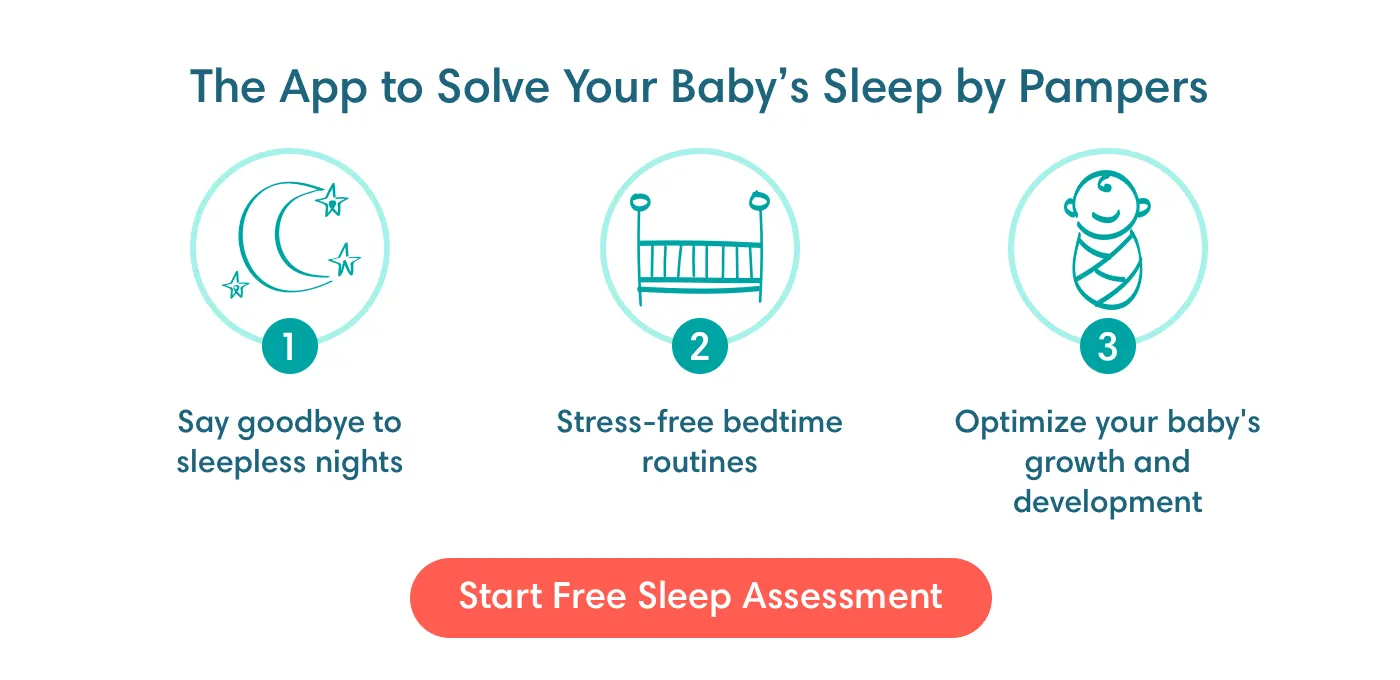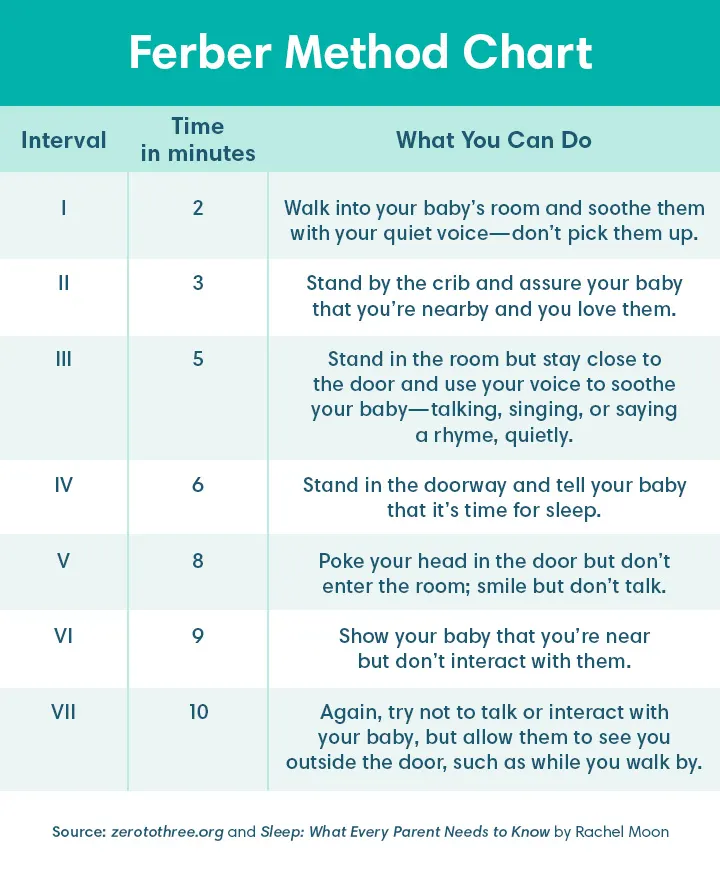
The Ferber Sleep Training Method
As you explore various sleep training methods for your baby, you may encounter the Ferber method, also known as ‘graduated crying it out’. This approach is just one of many options available for sleep training. In this article, we have compiled information about the Ferber method to help you determine whether this technique – or any other sleep training approach – is suitable for you and your baby.
What Is the Ferber Method?
If you’re unfamiliar with the Ferber method for sleep training, it might be helpful to know a bit more about its background. American paediatrician Richard Ferber wrote about his sleep training strategy in his book, Solve Your Child's Sleep Problems, first published in 1985. He suggests (along with others) that babies can be trained to soothe themselves to sleep if parents follow certain guidelines. This technique has been referred to as ‘Ferberising’ your baby.
Another well-known term for this sleep method is ‘graduated crying it out’. As the name suggests, you gradually let your baby ‘cry it out’ to fall asleep. But unlike the full cry-it-out method, you will still respond to your baby’s cries during the night. With the Ferber method, you slowly increase the intervals between response times and allow your baby to cry, which is believed to help them learn to fall asleep on their own.
How Does the Ferber Method Work?
The Ferber method follows fairly straightforward principles. After putting your little one to bed, you allow them to cry for a few minutes before you come back and check on them. This is repeated, with gradual increases in the length of time that you take to respond to your baby’s cries. Starting with small intervals, you build up the length of time that you wait before returning to check on your baby.
The NHS recommends limiting intervals to a maximum wait of 7 to 8 minutes. You can also adapt this sleep training technique based on your needs and your baby’s. Below is an example of how to sleep-train a baby using the Ferber method:
Although the Ferber method is a sleep training technique that’s most often used to get your child to sleep at night, you could also use it at naptime to keep your baby’s sleep consistent.
When to Start the Ferber Method
So, when can you start the Ferber method (or any other type of sleep training)? Well, this depends on a couple of factors:
Between 3 and 6 months of age, babies don’t need as many night-time feeds, and you may find that your baby is sleeping for longer periods of time. Up to 12 months of age, your baby might already be sleeping through the night, or at least sleeping for most of the night. Some babies will need about 12 hours of sleep at this age, although their sleep patterns may change if they are teething. It’s also important to remember that every baby is different, including how much they sleep and it’s common to have periods of sleep regression.
How Long Does Ferber Method Sleep Training Take?
The Ferber method, like other sleep training techniques, may take a few days before it starts to work. It is possible that your baby might start falling asleep within just one or two intervals of crying after you have practised Ferber for a day or two. However, all babies are different and yours might take a little longer to fall asleep and stay asleep on their own.
In time, most babies will fall asleep by themselves following their own natural rhythms. However, some babies might want more attention than others or might cry for longer. As a guide, the NHS does not recommend that you leave your baby to cry for more than 7 or 8 minutes before checking on them again.
Is the Ferber Method Harmful?
Many studies have been done to try to ascertain if sleep training is harmful to babies’ development, and studies are still taking place around this topic. A lot of experts agree that when infants receive love and attention during their waking hours, using the Ferber method does not appear to have any unwanted side effects.
Being able to fall asleep on their own is an important developmental milestone for babies, and short periods of crying do have the effect of helping a child fall asleep. Of course, all babies are different, and the Ferber method will not suit everyone. You are free to choose to try the Ferber method or any other sleep training technique, or simply decide not to use any method at all – do what feels right to you.
Is There a Modified Ferber Method?
As with any parenting technique, you can customise the Ferber method to suit your own needs. For example, if your baby has become very upset and is screaming while you are trying to follow Ferber, you could adjust the intervals and check on your little one more often. Remember that no two babies or families are alike. It may not work for you immediately or indeed at all, but that doesn’t mean you have to give up on sleep training completely. A little modification of the Ferber method might help, although it could make the technique take longer to work. Also, your baby may need more of your time and attention before they settle to sleep. Follow your instincts and do what you feel is best for you and your child.
Beyond the Ferber Method: Other Sleep Training Techniques
The Ferber method is just one sleep training technique for you to consider. There are many other tips for sleep problems for an unsettled baby and even for helping get a toddler off to sleep. Below are the five main sleep training methods for babies:
Remember, it’s best to wait until your little one is at least 6 months old before trying any sleep training methods.
FAQS AT A GLANCE
Sleep training is considered ineffective before your child has reached 6 months of age.
The Bottom Line
The Ferber method is just one option when it comes to sleep training, and it is up to you to decide what technique is best for you and your baby. If you need support with a wakeful, crying baby, you can go to your health visitor or GP as they will be able to offer you lots of advice and tips that may work for you.
The Ferber method, or ‘graduated crying-it-out’, involves increasing the intervals before responding to your baby’s cries, reaching up to 7 or 8 minutes. Opinions on its effectiveness vary, so choose what feels right for you and consider your baby's unique needs and temperament. Remember, sleep training is not advised for babies under 6 months, and keeping them in your room until this age can lower SIDS risk. While the Ferber method often works within a few days, it may not be effective if your child is unwell, hungry or uncomfortable.
How we wrote this article
The information in this article is based on the expert advice found in trusted medical and government sources, such as the National Health Service (NHS). You can find a full list of sources used for this article below. The content on this page should not replace professional medical advice. Always consult medical professionals for full diagnosis and treatment.
- Ferber, R, 1985, 2006, Solve Your Child’s Sleep Problems
- BBC: How Sleep Training Affects Babies
- NCT: Is it okay to let the baby cry?
- NHS: Dummies
- NHS: Help your child to sleep
- NHS: Helping Your Baby to Sleep
- NHS: Sleep Training – Sleep Factsheet
- Wikipedia: Richard Ferber






